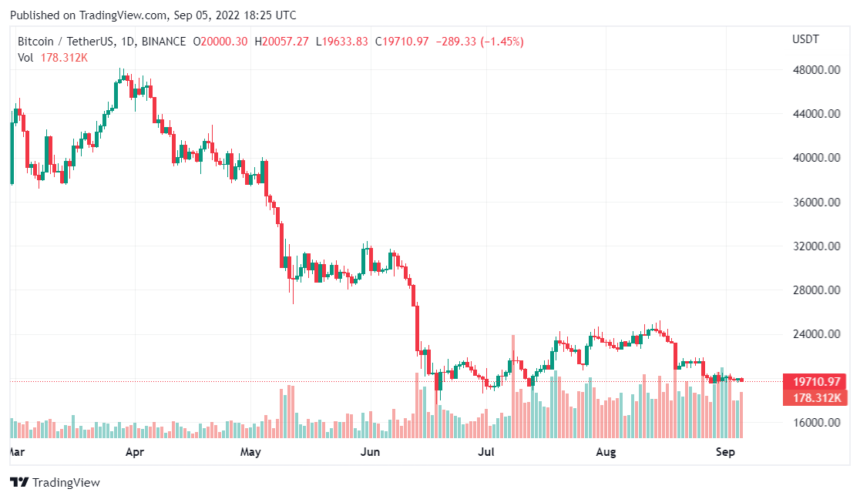[ad_1]
For the world’s leading cryptocurrency, Bitcoin, 2022 has been filled with many crests and troughs. Bitcoin has passed through different dilemmas that created a twist for performance and sentiment in the industry. The chronic crypto winter of the year halved the value of most crypto assets, of which BTC got a severe blow.
Though the beginning of the year’s second half brought a little bullish trend, the bears were still quick to take over. But that’s not all it is on the world’s largest cryptocurrency by market cap. More discoveries for trends in BTC indicators and parameters are still unfolding.
Mining Difficulty Increases
The latest Bitcoin mining difficulty adjustment increased by 9.26%. This current value is the most significant increase for the network since January 2022. Data from BTC.com revealed that on Wednesday, BTC mining difficulty reclaimed its lost value to hit 30.98 trillion. This was against the value of 28.35 trillion as of August 28.
The report from BTC.com gave some estimates for the possible future difficulty adjustment for Bitcoin. From the forecast, BTC would witness a fourth in almost 13 more days. This subsequent adjustment is expected to be a more modest increase reaching 31.16 trillion. If the estimated difficulty occurs, it will spar with the 31.25 trillion of May 10, BTC’s most significant problem.
Additionally, BTC.com provided data on the historical BTC’s mining difficulty from its launch. It observed that the last increase in the mining adjustment exceeds the expected growth of just 7%. Besides the most distinguished record of rising by 9.26% as of January 21, the latest data is the subsequent follow-up in percentage increase.
Bitcoin Hash Rate And Correlation With Mining Difficulty
While calculating the mining difficulty for Bitcoin, it would not be easy to disintegrate it from the BTC hash rate. Increased BTC mining difficulty is equivalent to a high hash rate and vice-versa. The mining difficulty measures the cumulative computational difficulties while mining Bitcoin.
The bearish market trend and the collapse of the Terra ecosystem in May created more distortion for the BTC hash rate. This is due to a drastic drop in Bitcoin price. Hash rate plummeted from its ATH of 253 EH/s in June to 170 ET/s in early August. Subsequently, most miners sold off BTC holding to rip off the effects.
While mining BTC, miners usually gather transactions on the network and hashes them. The cumulative number of hashes the miners produces determines the hash rate. The hashes aid the creation of new blocks on the blockchain. The hash is expected to remain below a certain value level, called the mining difficulty.
With a rise in the hash rate, mining becomes easier and faster for miners. This usually happens when the price of BTC is up. The reverse is the case for a decrease in the hash rate.

BTC mining difficulty creates compensation for swings in hash rate through its adjustment every 2016 block and occurs fortnightly. It maintains the production of the average block every 10 minutes.
Featured image from Pixabay and chart from TradingView.com
[ad_2]
Image and article originally from www.newsbtc.com. Read the original article here.

